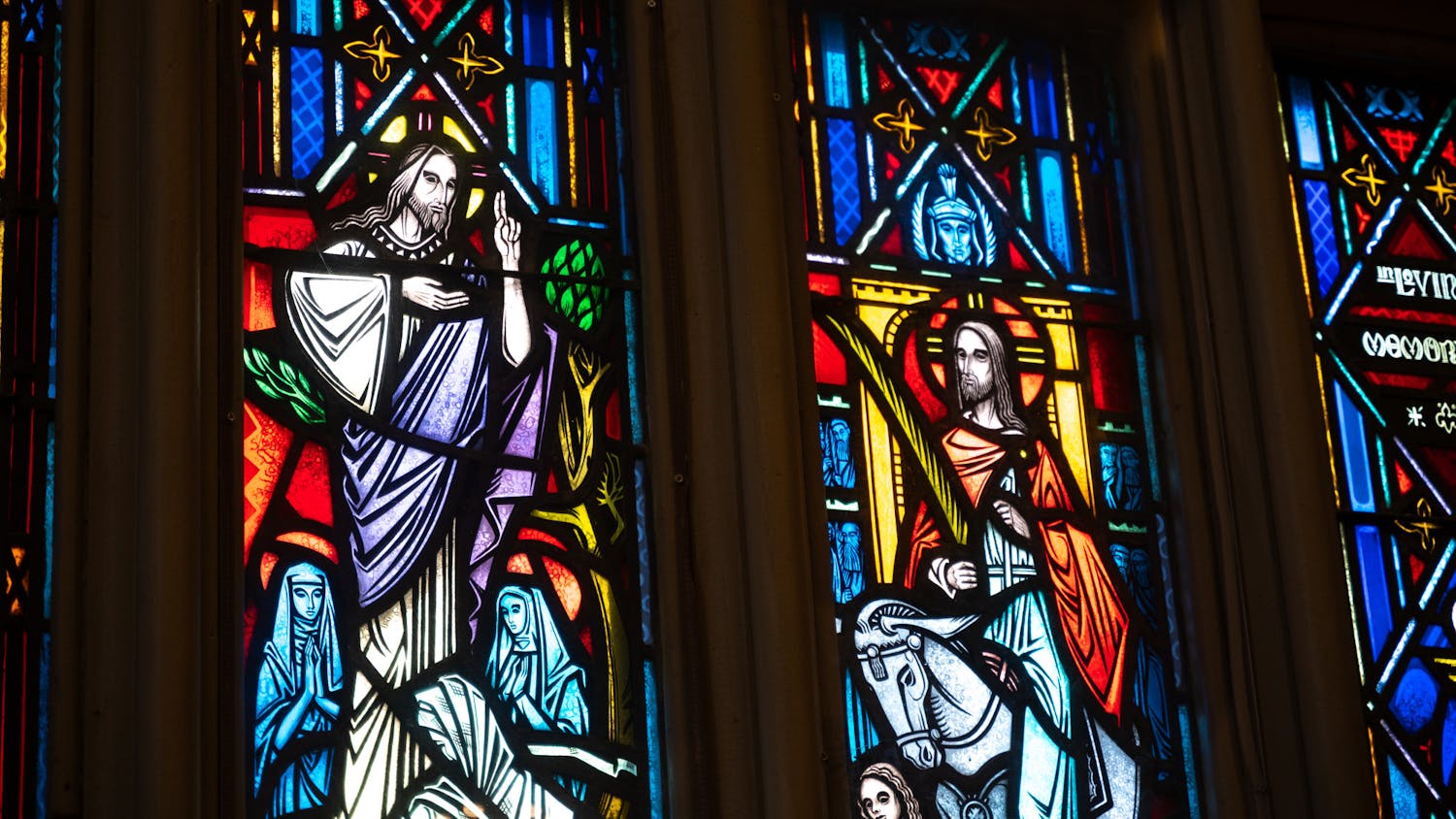The very title of Monty Little’s exhibition on the second floor of the Chazen Museum of Art — “Premonitions” — eerily retrospects a native identity still unravaged by European colonialism and genocide. The installation’s first half, at least, implicates and convicts the familiar iconography of American history. Monotypes of presidents look less like decorated portraits than a lacerated series of charcoal-smothered caricatures. A long scroll drapes from a wall in the center of the gallery’s first half, its text a continuous stream of ratified treaties between various Indigenous groups and the US government.
Monty Little uses the word “reminder” in the exhibition statement to memorialize what American violence has erased. Or perhaps, as Little cites from scholar Gerald Vizenor’s book “Manifest Manners: Narratives on Postindian Survivance,” to commemorate the “survivance,” the persisting presence of self that survives mass trauma through narrative and language.
The installation seems as permeated by historicity as by Little’s own personal life. Little, an artist of Diné heritage hailing from Tuba City, Arizona, seems to draw inspiration from his military experience in the Marine Corps during the Iraq War.
“I am projecting my truths about war onto the canvas,” Little told the War, Literature & the Arts Journal in a 2019 interview. “All the scary thoughts you’ve had are projected on the canvas and you want to erase them. I’ll blur the image and try to hide those truths inside [the] paintings.”
Little’s “Consider This as Memory” series, displayed in the latter half of the installation, distorts and scrambles the Indigenous faces of Edward Curtis’ portraits depicting figures of the 19th-century American West.
“Curtis’s photographs are nostalgic images and present illusions of romanticism,” Little says in the exhibition statement.
The altered portraits are products of old techniques of etching, laser cutting and screen printing to transmute Curtis’s original subjects into unrecognizable patterns. Some faces look like rippling disturbances on water. Others look like shreds of lacerated flesh beneath metal wires.
The erasure of identity assumes a violent form, which is why Little’s pieces in this installation are themselves blunt and declarative. Little’s “Preliminary Skies” features a wall of gaping jaws strung to long braids of hair cut from Indigenous children. The rows of desks in front of the wall not only illustrate the implicit cultural genocide of identity through children’s indoctrination into boarding schools but also its transliteration into physical violence as something merely observed and institutionalized.
The pieces in Little’s exhibition are intentionally unsettling yet unambiguous about their remembrance of mass genocide. There is no decorum or diplomatic propriety in Little’s versions of infamous presidential portraits. Lincoln was not a hero, Little seems to declare.
The cracked-open jaws of Indigenous children are, like the distorted photographs of Edward Curtis, a disturbed remainder of violence and a largely erased self.
“Premonitions” will remain open for free viewing in the Chazen Museum of Art until July 9, 2023.
Kai W. Li is an Arts Editor at The Daily Cardinal covering music, visual arts, and film. Follow him on Twitter at @kaijuneli.






